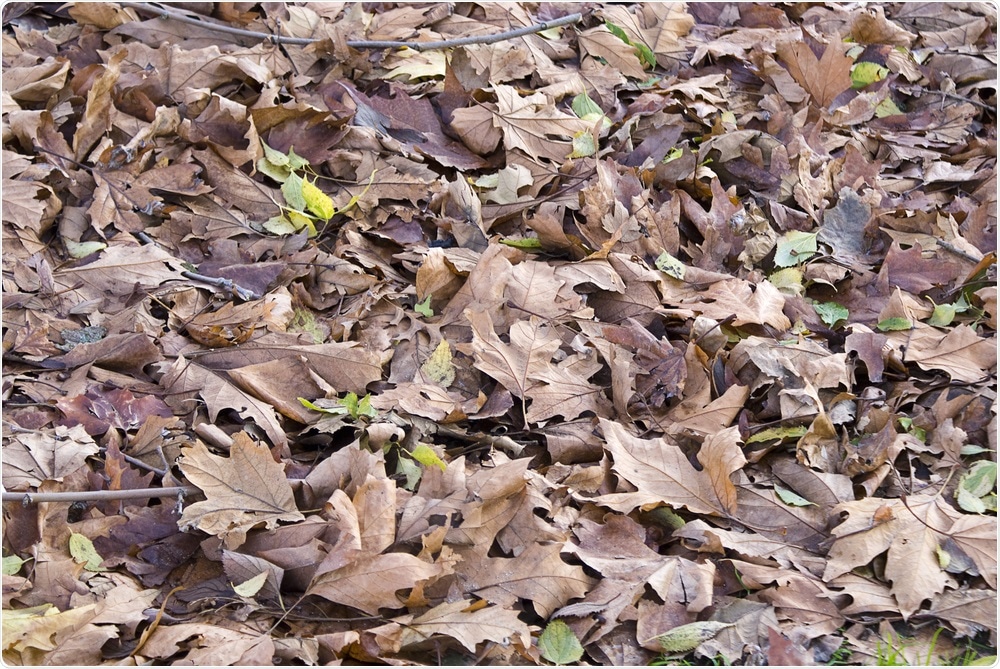A study conducted by researchers in Japan suggests that converting autumn leaf litter into biochar and adding it to vegetable fields may reduce emissions of the potent greenhouse gas nitrous oxide (N2O).

Image Credit: King Tut/Shutterstock.com
It might also provide a municipal waste solution to address the enormous amount of leaflitter that builds up in urban areas and is often disposed of by burning or storage in landfills, which also have damaging effects on the environment.
Worldwide, about 7% of agricultural land is made up of vegetable fields. One of the field management practices that harm the environment is the high application of nitrogen (N) fertilizer.
Due to high N fertilizer applications with a high cropping index, intensive vegetable cultivation is considered to be an important source of N2O from vegetated soil…Therefore, it is important to reduce N2O emission induced by N fertilizer under multiple crop cycles in one year while increasing vegetable yield under different management practices.”
Shigeto Sudo, National Agriculture and Food Research Organization, Ibaraki
N20 has a greater warming effect than C02
N20 is a potent greenhouse as that has a significantly greater global warming effect than CO2. Due to the high amounts of N fertilizer that is commonly applied to agricultural fields, these soils represent the largest source of N20 emissions.
However, within the agricultural sector, there is the potential to reduce these emissions and turn the soils into much smaller emitters.
Leaf litter could help
One common type of municipal waste that needs disposing of in urban areas is the leaf litter that gathers in yards, roads, pavements and playgrounds, and current methods include burning and landfill, which have negative effects on the environment.
However, the nutritional content of this litter means it could potentially be used as a soil amendment in vegetable fields. On the other hand, the leaf litter could hurt crop yield and N20 emissions.
Applying biochar to soils
Recent studies have reported on the effects of applying biochar to fields as a soil amendment approach. Biochar is a type of charcoal formed when biomass is gently heated under conditions that use little or no oxygen.
It has a high content of stable carbon which means it can be produced and used as an approach to lower emissions. Some studies have reported positive effects on vegetable fields such as carbon storage, reduced greenhouse gas emissions, increased soil fertility and greater crop yield.
However, other studies investigating the effect of biochar on N20 levels have generated conflicting findings, although they have also suggested further research is required to investigate the effects that specific types of biochar have on emissions.
What did this study involve?
As reported in the Journal of Agricultural Science, Sudo and colleagues have tested the effects of biochar made from autumn leaf litter on plant growth, ion uptake, N20 emissions, and soil properties during two different vegetable cycles (one growing komatsuna and the other spinach).
The team tried four approaches: applying no amendment (control), applying leaf litter, applying biochar made from leaf litter and applying both leaf litter and biochar to soils.
The treatments were applied before first planting a crop called komatsuna and then spinach. No further treatments were applied before spinach was grown so that any residual effects of the approaches could be evaluated.
The authors report that for both crops, amendment with leaf litter or a combination of leaf litter and biochar increased N20 emissions, whilst also reducing ion uptake, plant growth, and crop yield.
The results suggested that fresh organic matter should not be applied directly to vegetated soil to avoid high N2O emissions and yield reduction,”
Treating soil with leaf litter that had been converted into biochar had no significant effect on crop yield, but it did increase nutrient uptake compared with the control soil.
This treatment also reduced N20 emissions in the komatsuna crop, but not in the spinach crop, although levels were still less than those observed under the control conditions.
“Conversion of accumulated autumn leaf litter into biochar might be one of the solutions for municipal wastes while reducing N2O emissions after its amendment to soils,” says the team.
However, the authors stress that their study was conducted over a short period and only included two successive vegetable cycles: “Further research is needed to investigate the effects of leaf litter biochar on vegetable growth and N2O emissions under field conditions,” they conclude.
Sources:
Welcome to the UKBRC. UK Biochar Research Centre. Available at:https://www.biochar.ac.uk/
Overview of Greenhouse Gases. EPA: The United States Environmental Protection Agency. Available at: https://www.epa.gov/ghgemissions/overview-greenhouse-gases
Journal reference:
Sudo, S. Autumn Leaf Litter and Its Biochar Amendment on Soil Nitrous Oxide Emission, Plant Growth, and Nutrient Uptake of Komatsuna and Spinach Grown in Potted SoilsJournal of Agricultural Science 2020; 12, No.2. DOI:10.5539/jas.v12n2p26